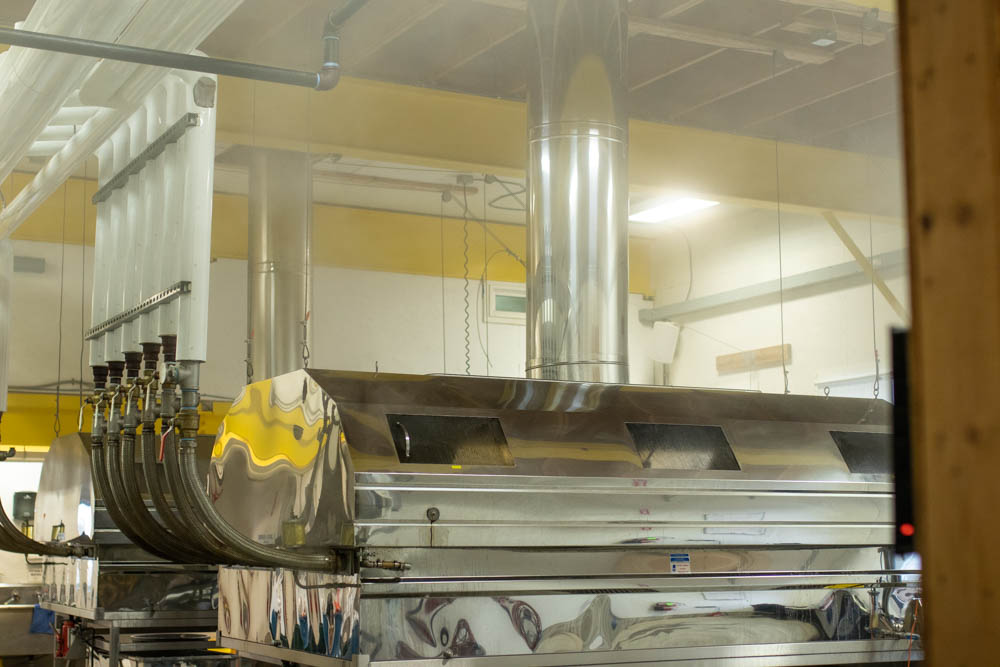Once the sap is in the sugar house it is time to boil it to syrup.
The first step is to concentrate it. The sap is run through a reverse osmosis machine which removes 90% of the water. A reverse osmosis machine (RO) works by using pressure to push the sap through a semi permeable membrane. Pure water, called the permeate, is pushed through, while sugar and minerals, too large for the membrane, stay put in the concentrate. Municipalities use ROs when they need to purify water but they are after the permeate. Using an RO reduces our energy consumption by 90% because producing maple syrup is essentially the process of boiling off the excess water. Less water = less boiling time = less energy consumption.
Once it has been sent through the RO, it is time to boil. For many years, sugarmakers used wood which was burned in an arch under the evaporation pan. While wood is often a plentiful resource for people who work in a forest, using wood has its drawbacks. The main one is that the temperature is difficult to control. Also, someone needs to be tending the fire full time until the boil is done. For the amount of sap that we process, using wood is not a realistic option for us. A newer option is to use an oil fire, which is also applied directly to the bottom of the pan. It can be more controlled and easier than wood but there is still danger of scorching the pan.
We started our operation with an oil-fired pan but a friend of ours who is an engineer and fellow sugarmaker suggested using steam. What a difference. Not only is it more efficient but there is no chance of burning. The system works by running steam through coils that lie directly in the sap. When we first switched we were concerned that the flavor might be different but instead, found it to be even better. Subtle notes of honey and apple came through as well as more common ones like caramel and brown sugar. In addition, boil times are considerably shorter which makes the sugaring season a bit more manageable for the sugarhouse crew.
Once the sap has boiled down to syrup, it is tested for brix which is a measurement of sugar density. For it to officially be maple syrup, it needs to reach a brix of 66, though the state of Vermont requires it to be even higher at 66.9. When it reaches proper density, it is put through a filter press to get that beautiful, clear, amber quality. For smaller operations, the syrup is then pumped directly into bottles and jugs. For larger operations like ours, the syrup is pumped hot into a barrel which is immediately sealed.
Just before the barrel is closed up, several samples are taken. One is for the sugarmaker. He or she will taste it right then and make notes about the color and flavor. The character of maple changes not only throughout the season but can be very different within the same day. One other sample is put in a small jar and labelled to connect them to that barrel. If anyone, such as a buyer wants to try the syrup in the barrel, he or she can open the sample for tasting rather than open up an entire barrel.

